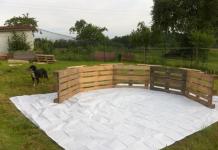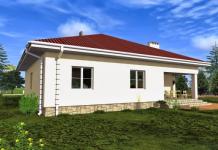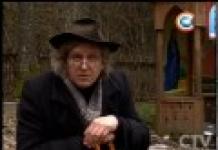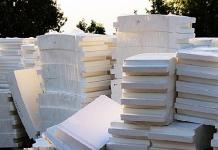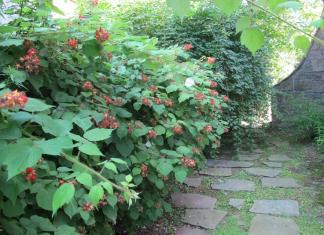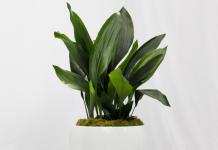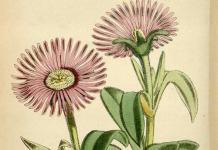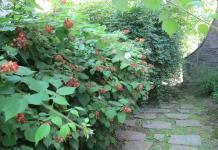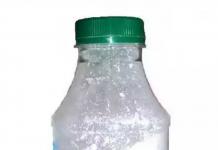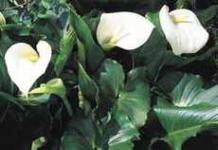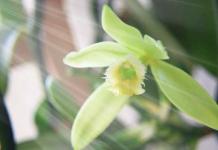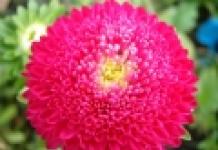The black elderberry is without a doubt the best known and most used species of the genus Sambucus (Elderberry). Its fruits are used to make jams, preserves, as well as for tinctures and liqueurs. Black elderberries are part of the famous Italian sambuca. The liquor owes its name to elderberry: sambucus is the Latin name of the plant.
Systematics and folk names
For the first time, a scientific description of the shrub was given by Karl Liney, giving it the name Sambucusnigra - black elderberry. Subsequently, scientists attributed the plant to the Honeysuckle family. After some time, black elderberry, like all species of the genus, was assigned to the Adox family. But having studied the chemical features and structures of the elderberry gametophyte, scientists poured the genus into a separate family.
Black elderberry is a member of the monotypic elderberry family (Sambucaceae). It has 28 species of herbaceous and woody plants.
Popular names for shrubs: buz, sambuk, treeless.
The external and internal structure of black elderberry
Black elderberry can have two life forms: a shrub or a tree. This deciduous plant can reach a height of 5 m, with a trunk diameter of 10-15 cm. The bark of the elderberry is light, grayish, covered with cracks. Young shoots, green, with a white soft core. Brown lenticels clearly stand out on non-lignified branches.
The root system is pivotal, but over time, many additional roots form in the shrub, and the root system becomes similar to fibrous.
Compound odd-pinnate leaves, arranged oppositely, reach 40 cm. Simple leaves, which make up the compound, are oval-elongated, with a pointed end and a serrated edge. The venation is reticulate, with a short fluff on the main veins.
Note: Black elderberry leaves emit an unpleasant odor when crushed.
 Small five-membered actinomorphic flowers of the plant are collected in brushes in the form of a shield. The diameter of the perianth does not exceed 0.5 cm. The inflorescence is divided into five main branches - this is a characteristic feature of black elderberry. The color of the petals is white or yellowish. Stamens, as a rule, 5, but may be 4. Pistil one, lower ovary. Blooms from May to June.
Small five-membered actinomorphic flowers of the plant are collected in brushes in the form of a shield. The diameter of the perianth does not exceed 0.5 cm. The inflorescence is divided into five main branches - this is a characteristic feature of black elderberry. The color of the petals is white or yellowish. Stamens, as a rule, 5, but may be 4. Pistil one, lower ovary. Blooms from May to June.
 The fruit is a drupe with three seeds, according to the number of carpels that make up the ovary. The fruits are popularly called berries, their color is black or dark purple.
The fruit is a drupe with three seeds, according to the number of carpels that make up the ovary. The fruits are popularly called berries, their color is black or dark purple.
Place in ecosystems
Black elder grows on the edges and in the undergrowth of mixed and deciduous forests. The plant is included in the shrub layer, growing in lighted places: on the edges, clearings, roadsides of forest roads and clearings.
The range of black elderberry is very wide, but limited to the Northern Hemisphere. It grows in Europe, Asia, North America, and parts of Africa.
Growing conditions for black elderberry
Black elderberry refers to unpretentious plants that require minimal care. It is easy to grow even for those who have never cultivated plants. In fact, it can be considered a weed plant, as it grows rapidly, forming continuous thickets and crowding out other plants.
Lighting
The shrub loves good lighting, can grow in direct sun: elderberry does not get burns from ultraviolet radiation. The plant can grow in partial shade, but for good development, elderberry needs to be in the sun for at least a couple of hours a day. It can be a place that is lit only in the morning or in the evening.
substrate
Elderberry is not demanding on substrates, it grows equally well on medium and heavy soils. The acidity that is suitable for a shrub ranges from slightly acidic to neutral (pH 5.5-7.0).
Watering
The shrub withstands dry periods, but tends to wet places. When grown in gardens, elderberry needs additional watering during a long absence of rains. To preserve moisture, the soil around young plants can be mulched with bark, straw or sawdust.
Fertilizer
Fertilize black elderberry with organic and mineral fertilizers once a year. Mineral complex fertilizers can be dissolved or solid. Both those and others to use in the spring.
For organic top dressing, solid compost and manure are suitable. As liquid fertilizers, a solution of chicken manure or manure is used. Apply organic fertilizers before flowering, or after flowering during fruit ripening.
Note: First of all, elderberry varieties that are grown to obtain a berry crop need fertilizer.
Black elderberry pruning
Pruning is important for the elderberry, which is forming a crown, usually these are separately growing individuals. Varieties of fruit-bearing elderberry, which are grown for the sake of berries, need to be cut once a year to renew the bush.
For a good yield, you need to remove weak shoots. Old branches that are over six years old should also be removed. The most fruitful are three-four summer shoots.
Uses of black elderberry
Elderberry is black I - the species most used by man from the genus Elderberry. It is simultaneously melliferous, decorative and medicinal. It is applied:
- for the production of alcoholic beverages;
- in landscape design;
- in folk and scientific medicine;
- in the chemical industry, for the production of natural paints;
- in the food industry (jams, marmalades, additives and food colorings);
- natural protection of plants from pests, as a natural insecticide;
- for the manufacture of crafts, toys and musical instruments;
- as a honey and pollen plant,
- to protect soil from erosion.
An interesting feature of black elderberry is that its roots, stem and leaves are very poisonous, plants are not eaten by herbivores and insects. But, despite this, elderberry berries are edible: they are willingly eaten by birds and used by people.
Alcoholic drinks based on black elderberry
"Berries" of elderberry are part of liqueurs, liqueurs, alcohol and berry wines. Usually fruits are used in combination with other components. For example, in addition to elderberry, anise is added to sambuca.
Elderberry juice, which has a pronounced maroon color, is used to naturally color alcoholic beverages made from the fruits of other plants. The advantages of elderberry juice over synthetic dyes are that it does not have a detrimental effect on internal organs, contains vitamins and other useful components.
Black elderberry flowers contain essential oils, nectar and sugars (over 20%) that serve to naturally sweeten and flavor. They are used to give sparkling wines and cognacs a light floral scent with notes of nutmeg.
Note: Elderberry fruits and products based on it should not be consumed by pregnant women and children. People suffering from increased production of gastric juice, peptic ulcer of the stomach and duodenum, patients with chronic hepatitis and diabetes mellitus, do not use elderberry (or consult a doctor before use).
Black elderberry in gardening and landscaping
As an ornamental plant, you can use wild or bred forms of shrubs. Elderberry is fast growing, easy to form, and can form impenetrable thickets, so it is great for hedges.
Very effective single-growing elderberry during flowering. The varieties created by breeders, which have an unusual leaf color, are decorative from early spring to late autumn. 'Aurea' has yellow-gold leaves, 'Purpurea' has burgundy or purple leaves, and 'Madonna' has green foliage with yellow edging.
Also, a bright yellow stripe along the edge of the sheet is characteristic of the Aureamarginata variety, its name is translated from Latin as “gold on the edge”. All of the varieties listed above reach a height of 2-3 m, and thanks to unusual leaves they are in harmony with many woody representatives of the plant world.
In addition to high varieties, varieties of black elderberry have been bred, the height of which does not exceed 1.5 m. Such varieties are suitable for alpine slides, rock gardens, compositions with boulders, for example, "Pulverulenta" with a marble pattern on the leaves.
Among the dwarf varieties of elderberry, the most famous "Viches Broom" - this baby is 20-30 cm in height, will decorate a flower bed or rock garden with its dark green leaves.
Varieties with pink flowers - "Gerda" and "Black Beauty". The latter, is distinguished by the colorful autumn coloring of the leaves.
Varieties created for berries do not differ in exquisite foliage, but their yield can exceed 7 kg per bush. In addition, the berries do not crumble on them. "Corsair", "Samba", "Hamburg", "Adam Elderserri", "Danau" are fruit-bearing varieties of black elderberry.
Insecticide properties of black elderberry
It is enough to stand only once near a bush of blossoming elderberry and already, perhaps, you will never be able to forget its smell. Experts call it "bright", "heavy" and "thick".
After such a characteristic, the property of all parts of the plant to remove mice and even cockroaches from the apartment is not at all surprising - they absolutely cannot stand its specific aroma and run away. To do this, you need to decompose, for example, elderberry branches in places where dangerous rodents and annoying insects bother (pantry, kitchen, balcony, wardrobe).
Meanwhile, Sambucus (the Latin name of the crop) is in the classification of plants very close to honeysuckle, aster and valerian.
It has many useful properties:
1 . It is a very persistent dye (wine, juices, fabrics).
2. The wood is perfectly polished, does not prick (combs, nails, musical instruments).
3 . It has an original taste (vinegar, jams, syrups, preserves, ketchup, jelly).
4 . It is considered a wonderful honey plant.
5 . It is very decorative (and what is especially valuable - it is not afraid of the shadow), therefore it is often used in landscape design when landscaping parks, squares, gardens, personal plots.
The healing qualities of elderberry have long been known. It also relieves the condition in such a rare disease in our time as malaria, and is drunk in the form of a decoction for common colds.
Well complements the "official" treatment prescribed by the doctor.
Especially when diagnosed
- hepatitis;
- angina (rinsing with infusion of flowers and leaves);
- constipation (strong laxative);
- hypovitaminosis (contains more than 50 in berries and 280 mg% in the leaves of vitamin C - ascorbic acid);
- obesity ( low calorie product, only 73 kcal per 100 grams of fruit). Lettuce from the tops of young shoots is included in the diet;
– influenza (diaphoretic, antipyretic);
- bronchitis (helps to remove phlegm when coughing, especially in the form of inhalations);
- urolithiasis (contributes to the "washing" of the urinary tract, as it "actively drives urine");
- gout and rheumatism (covering with warm fabric bags with a mixture of elderberry and chamomile flowers in a ratio of 1: 1);
- boils and hemorrhoids (steamed leaves remove inflammation);
- skin diseases - burns, diaper rash, bedsores, youthful acne (externally in the form of warm decoctions, tinctures, lotions).
Of course, there are also contraindications. For example , elderberry should not be used in Crohn 's disease .
In addition, when collecting elderberry on your own for treatment or other purposes, you should clarify whether this particular plant is “black elderberry”. Because her "close relative" - " red elder", very similar in appearance - the culture is extremely poisonous.
Particular care, vigilance and control should be exercised in places where this shrub grows, when walking together with small children.
Elderberry is a useful plant of the Adox family of the dicotyledonous plant class. Back in the 70s of the 20th century, this shrub was assigned to the honeysuckle family, but in 2003 the APG II classification was published, where elder genera, like viburnum, are assigned to the Adox family.
The genus Elderberry (Sambucus) includes four dozen species of various plants. It is found in temperate climatic zones of Europe and Asia, North Africa, Australia. It is found everywhere in Ukraine, Belarus, Moldova, in the south-east of Russia. Most often it grows as a middle layer of vegetation in deciduous and coniferous forests, on the edges, along roads, it grows rapidly, forming dense thickets. Elderberry has been known to mankind for many centuries, the mention of it is found in the writings of Pliny (1st century AD).
Description of elderberry
Black elderberry in landscape design photo What does a black elderberry look like
Elderberry, most often a bush or a low tree, is from 2 to 10 m tall. There are also herbaceous plants in the genus, for example, "herbaceous elder". However, we will pay more attention to the black elderberry, as the most sought-after representative of the elderberry genus.
Black elderberry is a perennial woody plant. The branches are thick and thin. Young stems are green in color, but, growing up, acquire a characteristic gray color, covered with small "scales". The leaves consist of an unpaired number of long, serrated leaflets, the total leaf length can be up to 30 cm.
Elderberry blooms at the end of May. Large, more than 20 cm in diameter, flat corymbs of inflorescences consist of white or light beige flowers of 0.8 cm each. The aroma of elderberry blossom is strong, slightly suffocating near. At the end of summer, fruits ripen - a brush of black berries with seeds. The berries themselves are small, less than a centimeter. Inside - reddish flesh.
Elderberry is a fast-growing plant, and even very useful, therefore, attention will be paid here not only to its planting, care and formation, but also to its beneficial properties, as well as situations where it can be dangerous.
How and when to plant elderberry

It is better to place elderberry from the northern or eastern sides of the site. Take into account that young branches have a very sharp, specific smell that repels insects, so elderberry is not planted near houses, but located near toilets, sheds, compost pits. If you want to plant near the terrace, where people are periodically, then the absence of mosquitoes will be a nice bonus. In general, the plant is not particularly demanding, but a dense shade or very acidic soil will adversely affect its development.
An experienced gardener knows that it is necessary to alkalize the soil wisely, and for elderberry - a couple of years before planting. And for beginners, we suggest: liming the soil is carried out by adding dolomite flour to it (today the most popular remedy for acidification of soils). The optimal pH for elderberry is 6-6.5.
When planting this shrub, give preference to one- or two-year-old seedlings, choose a bright place for it and, as usual, plant it in spring or autumn.
To plant a hole, prepare in advance, you will also need:
- humus - a bucket;
- phosphates - 50 g;
- potash fertilizers - 30g.
In a pit (depth 80 cm, width 50 cm), we fill up a mixture of the listed components and the upper, fertile layer of the earth (this must be taken care of when digging a pit). We use about two-thirds and leave to rest for a month. Already during the planting of the seedling, we loosen the mixture in the pit, deepen the seedling, sprinkle the roots with the soil mixture from the pit, and then completely the remaining third.

As a result, the root neck of the tree should be several centimeters above the level of the plot, however, after tamping and watering (a bucket or one and a half), the seedling will sag and be on the same level with the rest of the soil.
Most often, cultivated elderberry is grown as a bush, and if someone wants to grow it as a tree, then you need to think about the support and dig the appropriate column during planting, and then tie a seedling to it.
Seasonal elderberry care
Spring
Overwintered trees are freed from insulating material near the trunks, from leaves and other debris accumulated in the holes. If the winter was snowless, and the spring is dry, then spring watering should be carried out.
Take a close look at the bush. If there is damage from rodents or bad weather, then treat them with a solution of potassium permanganate and seal with garden pitch. As soon as the bright spring sun appears, there is a chance for the tree to get burned, because the bark of the tree heats up during the day and cools down at night, down to frost. Such differences are clearly not in favor of the tree. To prevent damage, the trees should be whitewashed with lime, thick enough to leave a noticeable layer on the bark.
- Before the start of juice flow, prune the elderberry. The bush lends itself well to formation. By nature, the shape of the bush is oval, not sprawling, if desired, you can leave this shape or shape it to your taste.
- In the spring, it is necessary to remove dried and frozen branches, remove the stems directed into the bush, it is advisable to get rid of about a quarter of the old branches.
- Be sure to cut the root shoots. After that, seal the sections with garden pitch, and treat the bush with Bordeaux liquid or Nitrofen, prophylactically from pests that managed to overwinter in the bark or in the foliage near the bush.
Summer
Elder grows very quickly, especially if favorable conditions are created for it:
- timely watering;
- pest and disease control;
- loosening the soil around the trunk;
- mulching of the trunk circle;
- extra food.
After the flowering period, it is necessary to spray against pests and diseases. Again, carefully remove the root shoots, otherwise, you miss a little, and it will overtake the main bush or, even worse, begin to spread over the site. To prevent such expansion, you can protect the root system of elderberry by digging some kind of barrier to a depth of half a meter, for example, a piece of slate.
The end of summer can bring the first harvest of berries. A rainy summer can bring re-growth of shoots. What with the fact that with the other we know what to do.
Autumn
Autumn is the time to harvest and prepare for winter.
We harvest, cook jam, jam, dry the berries. We prepare the bush for wintering:
- we carry out "sanitary" pruning (end of September);
- we dig up the planting holes, apply fertilizers, mulch the soil (end of September);
- if you plan to plant elderberry in the fall, then the last week of September is suitable for digging a hole;
- if the autumn is dry, then it is necessary to water the bush well before winter;
- plant treatment from wintering pests (October);
- whitewashing with slaked lime (October).
Let's talk in more detail about the processing of elderberry. If there are no visible pests or diseases, then preventive treatment twice a year is still required. You can use these drugs:
- Bordeaux liquid;
- Nitrofen (3% solution);
- copper sulfate (1% solution);
- urea (7% solution) is relevant in the spring, because it will also be a nitrogen fertilizer.
The time of the first procedure is early spring, before the start of the growing season, and the second is autumn, after leaf fall.
Elderberry will only ask for watering in a very dry summer.
then you have to pour up to two buckets under a bush a week. If the summer is with a normal level of precipitation, and you also mulched the near-stem circle, then sometimes loosening the soil under the bush, weeding the weeds will be quite enough. For young seedlings, of course, more scrupulous care is needed - both watering and loosening, but this is temporary until the elderberry gets stronger.
If the soil is fertile, and even under the bush there is mulch from compost or rotted manure, then the elder does not need to be fed. On poorer soils, nitrogen fertilizers will not be superfluous. You can use popular organic fertilizers: slurry, chicken manure. Suitable complex mineral fertilizers. Apply fertilizer in the spring.
- The care of the garden and front garden includes the obligatory pruning of trees and shrubs.
- When planting elderberry, its shoots are shortened to 10 cm on a strong outer bud.
- The same procedure is carried out every three years to rejuvenate the bush, called pruning under the stump.
- Spring pruning rules are described above.
- Autumn pruning is aimed at removing branches damaged by wind or harvest.
Note that elderberry is used in park culture as a plant for hedges, so it tolerates pruning easily and allows you to create various shapes.
If you use elderberry fruits, then remember that the 2-3-year-old branches are the richest in berries, and after the sixth year of harvest, you should not wait on such a branch.
elderberry breeding
There are vegetative and seed types of reproduction.
Growing elderberry seeds
It makes sense to propagate elderberry seeds only if you purchased varietal seeds in a specialized store, since seeds collected from a tree do not retain parental characteristics and just a wild game will grow.

- Elderberry seedlings can be obtained from seeds by sowing them in February-March in containers with nutrient soil or ready-made soil mixture.
- Remember that there should be holes in the bottom of the landing tank for water to drain.
- The seeds should be planted shallowly, no more than 1-1.5 cm. The distance between the seeds is 4-5 cm, but it is better if planted in separate cups.
- Pour over and cover with foil.
- We air until shoots appear 1 time per day, after which we remove the shelter.
- When the seedlings grow a little, they are transplanted into larger containers by transshipment.

Only grown seedlings are planted in the ground in spring How to propagate black elderberry photo
It will be possible to plant plants in the ground only next year in the spring, when they are strong enough. Having gained strength over the summer, they will be able to prepare for the winter.
Yet most often elderberry is propagated vegetatively:
- layering;
- cuttings;
- dividing the bush.
Reproduction by layering- a popular way because of the 100% result. We bend the young branch to the ground, after pouring manure into the groove, we dig in, leaving the end of the shoot on top. For greater confidence, you can press the branch to the ground with metal hooks. At the base, we pull the shoot with wire.
- If such a procedure is done with the onset of sustained heat, using a stiffened shoot, then in the fall the rooted shoot can already be separated from the mother bush and transplanted to a new place.
- It is easier with green shoots, they do not need to be tied up at the base, but they should be planted next year, when they become stiff.
- Such shoots do not particularly need to be fixed, they are very soft, that is, they dug in and have planting material for the next season.
How to propagate elderberry cuttings

When cutting planting material is chopped parts of a green shoot up to 25 cm long. A prerequisite is the presence of 2-3 internodes and two paired leaves. We process the lower part of the cutting with stimulants for the growth of the root system and plant it in a mixture of sand and peat at an angle. True, the best cutting will be a young shoot cut off from a branch with a “heel”, because it is there that the rapid formation of roots will take place.
- Cuttings need to create greenhouse conditions (you can cover with a high plastic bag, a jar or part of a five-liter plastic eggplant).
- We maintain high humidity for the first week: we spray the air in the “greenhouse” from a fine spray gun, you should not get on the leaves, as this will cause them to rot.
- If you plant cuttings in early summer, then in the fall there will already be roots and the plant can be transplanted to a permanent place.
The video will tell about getting elderberry from cuttings, planting and care:
When the goal is to get an adult plant right away, then you can divide the elderberry bush. In autumn, dig up the elderberry, chop or saw the root to get equal parts with branches and a good rhizome. The resulting bushes must be planted immediately. You can do this in pre-prepared pits or in containers for wintering, and transplant to a permanent place in the spring. Most often this is done when redevelopment of a plot or flower garden.
Pests and diseases of elderberry
Elderberry is not affected by any exotic diseases. Of the pests, aphids are most often annoyed. One treatment with karbofos is enough here. You can meet the elder tailed moth, the elder leaf mite or the elder miner fly. Against these insects, karbofos or decis will also help, only it will have to be sprayed twice.
Consider popular varieties and types of elderberry with photos and descriptions
Elder black varieties and photos

Black elderberry (Latin Sambucus nigra) - a plant to which this article is mainly devoted, we associate with the village, simplicity, maybe someone with a grandmother in a colorful dress. This plant can use everything: flowers, leaves, bark, berries.

On the basis of this shrub, many beloved decorative forms have been bred.

Marginata - the leaves have a silver border around the edge, the bush can be about 2.5 m in height, it develops very quickly;

Black elderberry Madonna planting and care photo Sambucus nigra ‘Madonna’
Elderberry blue

A rather tall tree, often about 15 m, is a resident of the floodplains and mountain slopes of North America. There is also a shrub form with thin branches and young shoots of crimson hue. The trunk of the tree and shrub is yellowish-beige, and the leaves have a bluish tint. The leaf consists of 5-7 long bare leaves 6-15 cm long.
The flowers are small, white with a yellow or beige tint, collected in inflorescences up to 15 cm, have a characteristic aroma. In September, fruits ripen - blue-black berries, half a centimeter in diameter. Blue elderberry has a bluish coating on the berries, which makes it look really blue. It prefers warmer latitudes, as it does not differ in frost resistance.
Siberian elderberry

This subspecies of red elderberry is more resistant to frost, therefore it grows in Siberia, in the East, European Russia. Favorite places - mixed or coniferous forests, highlands. Siberian elderberry is a lush shrub up to 4 m high. It is also called red elderberry for the color of berries that ripen, by the way, in late July - early August. Ripe berries are edible, but not popular. But unripe fruits cause pain in the stomach, nausea, convulsions, headaches, and even can be fatal.
elderberry herbaceous

This is a perennial herbaceous plant with erect stems reaching a height of 1.5 m. The people call wild elderberry or stinky elderberry, for the sharp smell of flowers. In the wild, she is an inhabitant of forests, edges, floodplains, mountain slopes of Central Russia, Ukraine, Belarus. The leaves are placed on long petioles and consist of 9-11 narrow serrated leaflets. The flowers are collected in inflorescences, erect, white or pinkish.
Herbaceous elder fruits are black shiny drupes, very attractive in appearance and easily accessible to children. We must be careful, because all parts of the elderberry are poisonous (contain hydrocyanic acid). Some literature describes the use of these berries for the preparation of liqueurs and other alcoholic beverages, this is a moot point. Now, if you plant a currant with an elderberry, then this will scare away harmful butterflies and a kidney mite. But there is a minus here - this plant has a strong creeping stem, so it will be problematic to remove the elderberry from the currant. During the drying of the flowers, the unpleasant smell disappears and they are sprinkled with apples for storage.
Canadian elderberry

Native places for her are the rich soils of North America. This plant is loved by gardeners due to its remarkable decorative effect. Indeed: a large leaf, up to 30 cm, characteristic of elderberry, magnificent umbrellas of white inflorescences, reaching 25 cm in diameter, brushes of dark burgundy fruits, which are also edible. Let's add more resistance to the climate of the middle zone.
Several decorative forms can be noted:
- maxim - differs in power;
- acutibola - on the contrary, tender, with feathery foliage;
- chlorocarp - there is a yellow tint in the foliage, and the berries are green;
- aurea - its leaves are green only in summer, and in autumn and spring they are yellow.
Elder Siebold

Eastern relative of the red elderberry. Natural halo - Japan, the Kuriles, the Far East. In Europe, a cultural form is grown - a powerful plant (tree or bush) up to 8 m high has large leaves (20x6 cm). Inflorescences loose, racemose, large.
Elderberry fluffy

It got its name due to the fact that young shoots are pubescent. North America is considered the homeland. Cultivars - a four-meter shrub. in May, the color of the inflorescences is white, sometimes with a yellow tint, sometimes with pink. Fruits - red berries with a stone - ripen in July.
You can note the forms with a different color of the fruit:
- xanthocarpa - yellow-orange fruits;
- leucocarpa - white fruits.
Elderberry Uses and Precautions
The black elderberry is a wonderful plant, every part of it can be used. And not in vain.
Here is a list of useful substances that are contained in this plant:
- in the leaves - organic acids (malic, valeric, acetic, chlorogenic, coffee), carotene (provitamin A, as in carrots), tannins (eliminate the influence of microorganisms), choline (vitamin B4), vitamin C (0.28%) and etc.;
- in flowers - essential oils, valerian, malic and caffeic acids, choline, rutin, etc.;
- in berries - also carotene, malic acid, in addition - ascorbic acid, sugars, fructose and glucose, resin and dyes;
- in the bark - choline, phytosterol (cholesterol neutralizer), essential oil.
Leaves are used fresh as a compress for burns, boils, cuts. The sheet must first be steamed. The leaves have antipyretic, diaphoretic, diuretic, and mild laxative effects.
There is a rustic remedy for the treatment of chronic constipation. To prepare it, you need to boil the young shoots in honey, cool, drain and take "elder honey" inside.
From fresh flowers, you can make tea with the addition of lemongrass, mint
A tonic made from fresh elderberry flowers will please the skin. It is prepared simply: 10 inflorescences are poured with half a liter of boiling water, insisted for a day, filtered and stored in the refrigerator.
Lotions or baths of elderberry bark help with arthritis, rheumatism, gout. The decoction is recommended for diseases of the skin and kidneys.
In the season, thrifty housewives make preparations. The most widely used inflorescences and fruits. The flowers must be dried, carefully following the drying rules, as they are very susceptible to high humidity.
It is recommended to collect flowers on a dry, clear day in the afternoon ...
cut coarse roots as short as possible, dry naturally or in an electric dryer, not exceeding a temperature of 35˚. Wipe dry raw materials through a plastic sieve, discard coarse parts, store ready-made dry flowers for 2, maximum 3 years. We do the same with berries, only the shelf life of dried berries is reduced to six months.
It is worth remembering about your preparations during the period of colds, because it is the decoction that has antibacterial and diaphoretic properties. Making a decoction is simple: at the rate of 1 tablespoon of flowers, pour a glass of boiling water and leave on low heat for a quarter of an hour. Then you need to cool, strain and drink three times a day for half a glass.
A decoction of all parts of the elderberry is used to regulate metabolism. Dry flowers are poured over apples laid in storage.
Elderberry next to man for many centuries
The Latin name for elderberry is Sambucus Sambucus. One of the versions of the origin of this name is from the name of the ancient Iranian instrument sambuza, which was made from elderberry.
Our ancestors found many uses for this plant. One of them is based on the coloring matter of elderberries. Elderberry juice was used to dye fabrics: cotton, linen, hemp and silk. It turned out black, and when mixed with alum, blue came out. By fixing elderberry juice with vinegar, ink was obtained. Village girls blackened their eyebrows with berry juice.
The fruits and flowers were used to make drinks.
For example, from fresh flowers, lemon juice, zest and water after fermentation, a light refreshing drink was obtained. Vodka was made from fermented berries. Also, elderberry is one of the ingredients of the famous Italian liqueur Sambuca. The exact recipe for its preparation is kept secret, but home craftsmen offer to make the drink themselves and it contains dried black elderberry flowers.
In the villages in the spring, they were happy with the first greenery, so they made salads from various young plants, including young elderberry shoots added to salads. If you want to experiment, so to speak, return to basics, then keep in mind that young elderberry shoots have a laxative and diuretic effect.
Jam made from black elderberries
The recipe is simple: a centimeter layer of berries was sprinkled with a layer of sugar, and so on several layers (for 1 kg of berries, 1 kg of sugar); let stand for a day, boil for 15 minutes and pour into sterile jars.
At a time when plants were treated with respect, there was even a reverent attitude towards elderberry. It was believed that it was unfortunate to cut down an elder bush that had grown on its own in the courtyard, and before a sudden meeting with this plant, the men took off their hats. This respect is not idle.
Even Hippocrates believed that elderberry can cure a dozen diseases. And Cikkerot (a doctor of the 18th century) recommended that every housewife have dried elderberry flowers at home and jam in case of a cold or illness of the kidneys and bladder.
Prepared from berries and young wine
You need a three-liter jar of juice and a glass of sugar or honey. The jar is tightly sealed and gases are vented through a water lock. Fermentation is carried out in a warm place, without access to sunlight. When finished, the wine is bottled, corked and stored horizontally in the cellar.
Already in the 21st century, the elder was remembered again. It turns out that its use has positive results in the treatment of cancer and diabetes. B vitamins in berries are collected in exceptionally correct proportions for humans.
You can talk for a long time about the beneficial properties of this plant familiar to the eye, but there are also contraindications. The most basic is individual intolerance to the components that make up the composition. Therefore, it is necessary to start using small doses, carefully listening to the body. Pregnant and lactating women, people with Crohn's disease, chronic stomach diseases should definitely not take elderberry in one form or another.
The most dangerous are other elderberries, such as red elderberry, whose berries can be confused with black elderberry. There is only one recommendation here: if you are not sure what kind of plant it is, then it is better not to use it.
There are 40 species of elderberry growing in the temperate and subtropical regions of the two hemispheres, except for South and Central Africa.
A shrub or small tree with pinnate leaves and berry-like fruits.
Elderberry is demanding on soil moisture, shade-tolerant, is characterized by rapid growth, perfectly tolerates a haircut.

Propagated by sowing seeds, cuttings, layering. Only decorative forms propagate vegetatively. Almost all types of elder require a strong, short pruning, after which the shrub is perfectly renewed.

Types and varieties of elderberry
In Russia, 13 species are cultivated in the middle lane, but only four are most common: red, black, grassy and Canadian.

Canadian elderberry
Grows in North America.
Canadian elderberry is a decorative shrub for landscaping, growing about 4 m tall.
The structure and shape of the bush with yellow-gray shoots, decorated with complex leaves; yellow-white, small, with a charming smell, flowers collected in convex umbellate inflorescences; shiny, spherical, edible, dark purple fruits.
In culture, the height of Canadian elderberry does not exceed 3 m. It grows quite quickly, shade-tolerant.

Does not tolerate dry air. Prefers moist fertile soils. Canadian elderberry is used in single plantings.
It is very reminiscent of black elderberry, but more stable in the middle lane.
Both of these types of elder differ only in subtle features - the number of leaf lobules and the color of the fruit.
Canadian elderberry "Aurea". Fast growing shrub. In early spring, the leaves are yellow, then they turn green, and turn yellow again in autumn. The flowers are fragrant, yellow-white in large umbellate inflorescences.

They turn into edible cherry fruits. In the shade of the elderberry, the Canadian "Aurea" loses its golden foliage.
Elderberry red or racemose
The homeland of the red elderberry is the mountains of Western Europe. It grows in the undergrowth of mixed and dark coniferous forests.
A small tree or deciduous shrub 5 m high, with a wide crown; complex, green leaves, from 7 pointed leaflets.

The flowers of the red elderberry are greenish-yellow. Canadian elderberry blooms for 20 days. The fruits are small, bright red, berry-like. Branches and leaves have a very unpleasant smell.
This elder grows quickly in moist soils. Can tolerate partial shade. In cold winters, shoots may freeze slightly.
Propagated by seeds and cuttings. It is very elegant during the fruiting period, especially when grown in standard form, does not lose its decorative effect for decades, and is seductive during the flowering period. Elderberry red is beautiful in group planting and as an undergrowth.

Elderberry red has decorative forms:
low - dwarf;
pinnate - when blooming, the leaves are purple, with dissected serrated leaves;
thin-leaved - the leaves are deeply dissected into narrow segments, the foliage is very openwork;
purple - with purple or pink flowers; yellowish - with yellow, with fruits with an orange side.
Elderberry red "Plumosa". At 11 years old, the height of the tree is about 3 m. It can reach 5 m in height. The growth rate is quite fast. The red elderberry Plumosa blooms in May. The fruits ripen by July. Winter hardiness is average.
Elderberry red "Plumosa Aurea". Bush with golden cut foliage. Grows fast. Elderberry "Plumosa Aurea" is one of the most beautiful yellow-leaved shrubs.

In the shade, the leaves of this elderberry turn green. It is especially beautiful in spring, when red leaves surround its inflorescences. The flowers of the red elderberry "Plumosa Aurea" are yellow-green, then red fruits appear.
Elder "Sutherland Gold". It differs from the previous ones only in greater dissection of the leaves and resistance to burns.
elderberry herbaceous
In the wild, it is found in the Caucasus, Ukraine, Belarus, Russia. It grows in ravines, on the edges, on the banks of rivers, like a weed in vegetable gardens.
This is a grass, about 2 m high. Mature berries of grassy elderberry form dark, large, almost black shields and are poisonous when fresh, as they contain hydrocyanic acid.
During flowering and fruiting is very beautiful. Elderberry herbaceous with an unpleasant strong odor. Used to repel rodents and insects. Well drives away pests from currants.
Siberian elderberry
Grows in Russia, Western and Eastern Siberia. Grows in mixed and dark coniferous forests. Siberian elder bears fruit from 2 years.

Elderberry location
For the normal growth of elderberry, nutrient soil and light are required. In the shade, it does not develop well.

elderberry breeding
All types of elderberry are propagated by seeds and cuttings.

Uses of elderberry

Most species of elderberry have an unpleasant odor that repels insects, so it is often planted next to cesspools, compost heaps, and toilets.

It is rare that anyone has seen this shrub in all its glory, usually it is cut off so that it does not take up a lot of space.





The genus Elderberry belongs to the Adox family and includes more than 20 species.
These are shrub plants, less often trees, the height of which ranges from two to five meters. Shoots branch well. The leaves are long. Not paired pinnate, opposite. The flowers are white or yellowish. The fruit is a black berry. All parts of the elderberry are poisonous, and only the black elderberry is less toxic, although all parts are equally poisonous.
Elder varieties and types
One of the decorative types. It is a tall tree, but can also be formed as an ornamental shrub. The bark has a light shade, which on young branches gives off red. Cream-colored inflorescences, black berries. Does not tolerate frost well.

Originally from Siberia and the Far East. A tall shrub plant that can withstand cold weather well.

More common in Eastern Europe and the Caucasus. This species blooms beautifully, but has a disgusting smell. Can be grown to repel harmful insects.

Native to North America. A shrub with a high decorative effect. The branches are yellowish in color, the foliage is very long, the flowers are cast yellow and form large umbrellas. Suitable for growing in the middle lane.

- Popular variety Aurea - in spring and autumn, its foliage acquires a yellow color.

Or racemose comes from Western Europe. Grows up to 5 meters. The foliage is oval, long, not paired pinnate. Inflorescences yellow-green. The berries are red. The plant emits a bad smell, but during flowering is very attractive. In addition, it has a dwarf variety, as well as purple and yellow (inflorescence color). This species is extremely toxic.

Far Eastern species, which also grows on the Japanese islands. Tall bush, reminiscent of red elderberry, but taller and more massive.

Popular for its variegated varieties:
- marginata ;

- Pulverulenta .

Or treelike probably the most common species that often grows wild. It is a very tall shrub with opposite non-paired pinnate foliage. Inflorescences may give a little yellow. The berries are black, have less toxicity than other species and can be used to make jams and wines.

Common varieties:
- Black beauty ,

- Madonna ,

- Laciniata .

Black elder planting and care
For planting, it is better to select seedlings of one to two years of age. The planting procedure is usually carried out in spring or autumn. The shrub does not require special conditions, but you should still choose a lighted place, otherwise the bushes will not be so beautiful.
In terms of soils, loams or podzolic, slightly acidic substrates are better suited. If the reaction is too acidic, then dolomite flour must be added to it before planting, but this must be done in advance, at least six months before planting.
Often this plant is planted near swarms of flies, such as next to compost pits, because the smell emitted by the foliage and branches repels flies and other insects.
Lilac also has a number of medicinal properties and contraindications, and at the same time it is a highly ornamental shrub, grown during planting and care in the open field. Growing recommendations can be found in this article.

Elder planting
A month before planting the plant, they dig a hole that will be 80 cm deep and half a meter in diameter. Digging the earth, its upper part is dumped into one pile, and the one that is deeper into the second. If you want to have an elder tree, then you need to drive a peg into the hole, which will later serve as a support. When growing shrubs, support is not needed. The upper ball of soil is mixed with 7 kilograms of humus, 50 grams of phosphorus and 30 potassium, then one third of this earth is poured into the bottom of the pit.
To protect yourself from overfilling the garden with overgrowth, it is necessary to dig a net, iron or slate into the ground after about 50 cm from the stem.
When the time for planting comes, the bottom is loosened and a seedling is placed in the pit. To begin with, unfertilized soil, which was deeper, is poured into the pit, and then the rest of the soil with fertilizers is poured. After these procedures, the root neck should be slightly above the soil level. Next, they trample the ground and pour a bucket and a half of water under the seedling. Autumn planting is carried out in the same way.

elderberry processing
With the advent of spring, you need to make sure that the plant does not get burned from the bright sun. To do this, the main shoot and skeletal branches are treated with lime. Also in the spring it is necessary to disinfect with potassium permanganate and garden pitch the damage received in winter due to pests.
When heat is established, it will be possible to carry out a shaping pruning of the bush, and then disinfect it with 1% Bordeaux liquid, which will protect the elderberry from pests. If there was little snow in winter, then it does not hurt to pour a bucket of water under the plant.
When flowering ends, it does not hurt to carry out another treatment with Bordeaux liquid, which will protect against insects and powdery mildew.

Watering elderberry
With the advent of summer, plants begin to grow strongly and set berries. Based on this, the soil must often be loosened and watered so that it is moist, but the water does not stagnate in the roots. If the bush froze in winter, then it will begin to expel shoots from the root, which must be cut off immediately, otherwise they will grow faster than the bush.
In rainy seasons, elderberries do not need watering, and you can also protect yourself from this by covering the area with compost mulch. If the summer is very hot, then watering is carried out every 7 days, pouring a bucket of water under the bush.

Elderflower fertilizer
If your soil is nutritious, then you can refuse fertilizers, but when growing in poorer soils, nitrogen supplements that are applied in the spring will not interfere. For this, organic matter, for example, chicken manure, will do.

Black elderberry pruning
If there is a lot of rain in the summer, then the growth of the stems may begin again and then it will be necessary to cut off the tops of the shoots to stop this process.
As mentioned, in spring and autumn, formative and sanitary pruning is performed. In addition, every 3 years it is necessary to carry out rejuvenating pruning of branches up to 10 cm. It is better to carry out this large-scale pruning with the advent of spring - before the buds swell.

elderberry in winter
In autumn, you need to start preparing the shrub for wintering. In September, sanitary pruning is performed. By October, it is necessary to dig up the soil on the site, and if autumn is without rain, then it is good to water the plants so that they are saturated with moisture for the winter.
In the middle of autumn, it is necessary to again treat with 1% Bordeaux liquid or a similar preparation. To protect against gnawing pests, boles are treated with lime or chalk with copper sulfate. The plots are covered with dry leaves or humus, and when snowfalls begin, the tree trunks are covered with snow.

Growing black elderberry from seeds
Elderberry can be propagated by seed and vegetative methods. The seed method does not preserve the varietal characteristics of the plant, so it is used very rarely.
The seeds must be separated from the berries by rubbing the latter through a sieve. Sowing is carried out directly into the ground in the fall, deepening the material by a couple of centimeters.

Propagation of black elderberry by cuttings
Green cuttings are prepared at the beginning or middle of summer - they should be about 11 centimeters long and have a pair of internodes and two upper leaves, from which they cut most of them, leaving only four segments.
The material is rooted in sand with peat, mixed in equal proportions, having previously treated the cuts with a root formation enhancer. It is necessary to keep the cutting in greenhouse conditions, which can be achieved by covering it with polyethylene.
From time to time, the ground under the cutting should be slightly moistened and water should be sprayed onto the walls of the polyethylene to increase the humidity. Try not to get water on the foliage. In autumn, it will be possible to transplant the cuttings into open ground.

Propagation of black elderberry by layering
Layering is one of the most reliable ways. To do this, young branches are bent to the soil and sprinkled with soil, to which you can add a little compost.
The layering needs to be watered from time to time, and when it takes root and becomes strong, which is enough for one season, it is separated from the parent and transplanted to a permanent place.

Elderberry reproduction by dividing the bush
They resort to dividing the bush in the fall. Large bushes are dug up and divided into equal parts. It will not be so easy to do this and it will be necessary to resort to an ax.
The cuts are powdered with charcoal and the delenki are planted in the prepared holes.

Diseases and pests
As for pests and diseases, there should not be any problems. It is worth mentioning here only aphids .
So that she does not attack the bush in the future, treatment with Karbofos can be added to the spring disinfection.

Black elderberry medicinal properties
All types of elderberry are very poisonous and only black elderberry, which has less toxicity, is used in medicine and for canning.
Since the leaves, flowers, bark and berries of this plant contain many useful substances, they were used in folk medicine, but with great care, because if used incorrectly, hydrocyanic acid poisoning can occur.
Let's say an infusion of dried berries was used for problems with the gallbladder and intestines. Tea was used for colds and as an anti-inflammatory, antibacterial agent.
A decoction of the bark was used for gout, kidney disorders, skin problems.
Despite the wide range of applications, it is strongly advised not to self-medicate, because you can easily make a mistake and pay dearly for it. In addition, it is easy to confuse red and black elderberries, and the former is incredibly poisonous.

Black elderberry contraindications
Preparations and products with black elderberry should not be taken by pregnant women, patients with colitis, people with stomach problems, as well as those suffering from diabetes insipidus and Crohn's disease.
Traditional healers often provide elderberry as a cure for cancer, but there is no real evidence for this. Yes, when used correctly, this plant has a general strengthening effect on the body, but it does not specifically cure cancer.

Elderberry wine
To make elderberry wine, you need to take 3 kilograms of berries, 3 liters of water, 1 kilo of granulated sugar, 5 grams of citric acid and 100 grams of unwashed raisins, wine yeast.
To begin with, the berries are washed, separated from all legs and crushed. Pour 100 g of granulated sugar, citric acid and 2 liters of boiling water into the mass. Everything is mixed and kept on the stove for 15 minutes at low power.
After that, the mixture is left to cool and obsolete it. The liquid is poured into a glass bottle for fermentation. Syrup is made from the remaining water and sugar, cooled and poured into the squeezed juice, raisins and wine yeast are also added.
When everything is done, a water seal is installed and the bottle is kept in the dark and warm.
At the end of fermentation, the wine is filtered from sediment, poured into glass bottles and left for six months. If during the infusion process a precipitate appears again, then the liquid must again be filtered.

Black elderberry syrup
Elderberry can be used to make a delicious syrup. To do this, a kilo of berries is poured into 400 ml of water, brought to a boil and boiled for 20 minutes.
After that, the mass is squeezed out, and another kilo of granulated sugar is added to the resulting liquid, put on fire until it boils and boil a little until the sugar dissolves. The syrup is poured into bottles or jars and kept in a closed refrigerator.

Elderberry jam
You can also easily make jam from elderberry. To do this, mix the berries and sugar in a one-to-one ratio and leave the berries to let the juice out.
After that, the mixture is brought to a boil and boiled for at least half an hour until cooked, which is determined by dropping the jam on the nail - if it spreads slightly, then it can be poured into jars.



